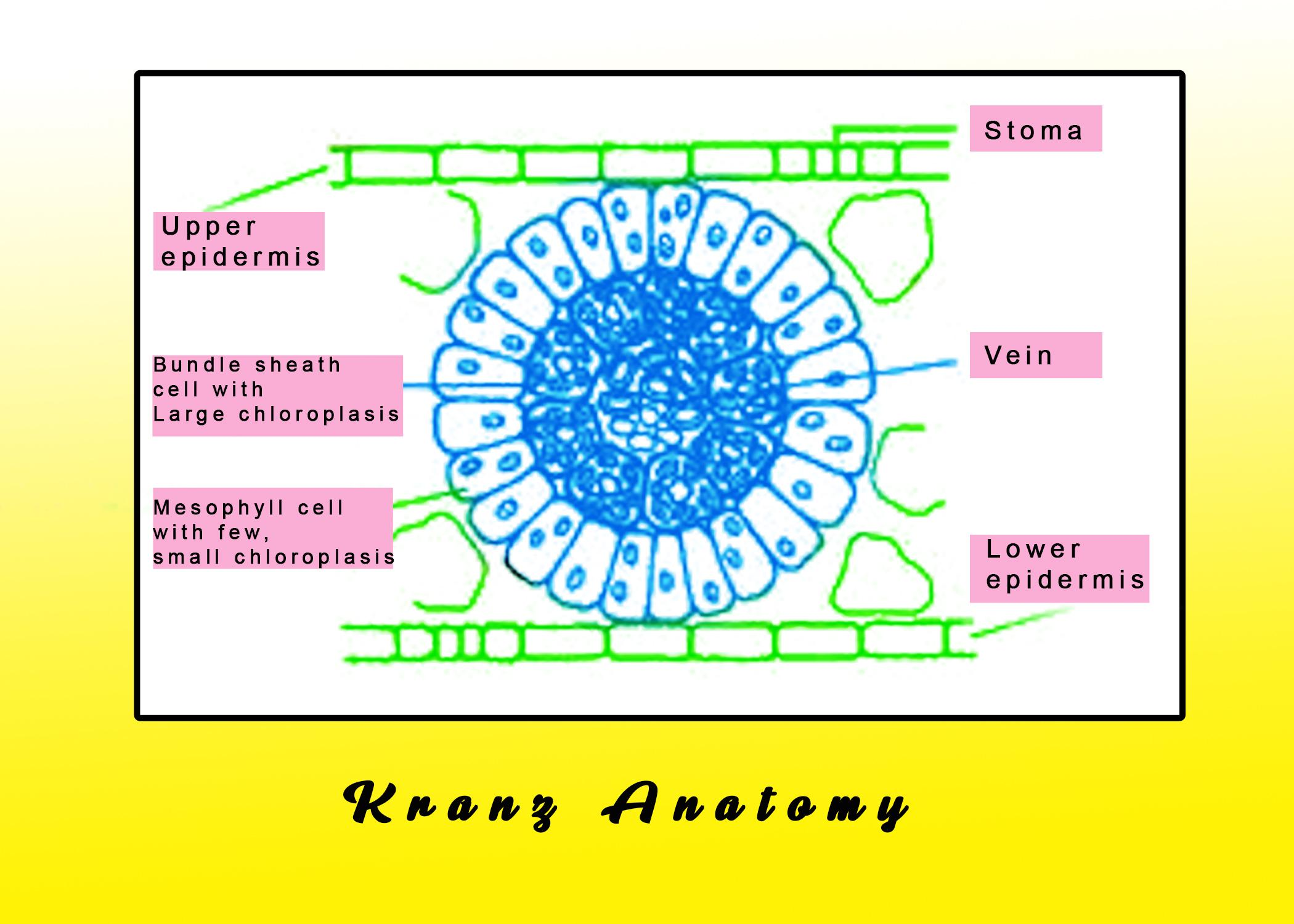Question
Question: In Kranz anatomy, the bundle sheath cells have- (a)Thin walls, many intercellular spaces, and no ...
In Kranz anatomy, the bundle sheath cells have-
(a)Thin walls, many intercellular spaces, and no chloroplast
(b)Thick walls, no intercellular spaces, and a large number of chloroplast
(c)Thin walls, no intercellular spaces, and several chloroplasts
(d)Thick walls, many intercellular spaces, and few chloroplasts
Solution
Kranz means wreath (ring) and is a representation of the cells' arrangement. These cells are distinguished by a large number of agranal chloroplasts, thick walls, and no spaces that are impervious to gaseous exchange.
Complete answer:
In the chloroplast of C4 plants such as sugarcane, maize ( Zea mays), sorghum, etc., Kranz anatomy occurs. It has two photosynthetic cell types organized in a particular way. There are bundle sheath cells covering the vascular centers and mesophyll cells that surround the sheath cells of the bundle in turn. Rubisco is only found in internalized bundle sheath cells that assist in carbon dioxide fixation.
Kranz anatomy is a specialized structure in C4 plants where the mesophyll cells are clustered in a ring-like fashion around the bundle-sheath cells. In the bundle sheath cells, the number of chloroplasts is more than that in the mesophyll cells. In C4 grasses, such as maize and a few dicots, this is found.
Additional Information: In the C4 plants, the light-dependent responses and the Calvin cycle are segregated. In the bundle sheath cells, the Calvin cycle happens and the mesophyll cells have light-dependent reactions.
Atmospheric oxygen is first fixed in the mesophyll cells to form the 4-carbon compound oxaloacetate, catalyzed by PEP carboxylase.
Oxaloacetate is converted into malate that is carried to the cells of the bundle-sheath.
In the bundle-sheath cells, malate dissociates to free carbon dioxide.
Carbon dioxide is fixed by Rubisco and converted into sugars.
So, the correct answer is ‘Thick walls, many intercellular spaces, and few chloroplasts’.
Note: In three separate steps, the Kranz anatomy is developed:
-Procambium initiation
-Bundle sheath and the specification of mesophyll cells.
-Creation of Chloroplast and integration of the C4 cycle.

